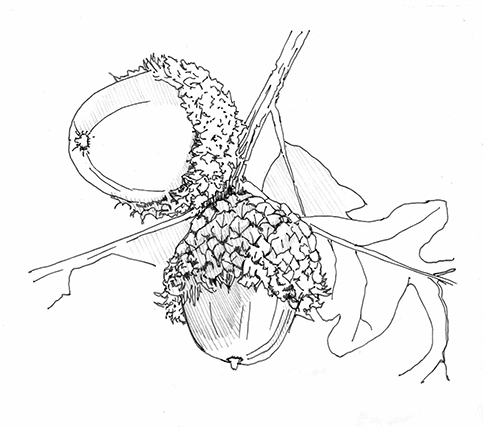Memorial Grove: Witnessing Change
Confederation Park
A memorial is a marker placed in the landscape or built as a structure to remind people of a person or an event. Memorials often bear witness to moments of conflict and loss, but a memorial can also take the form of a living entity that tells a story. In this way, trees, like memorials, can symbolize memory.
Through time, Monument Trees have stood as silent witnesses to historical events that shape our understanding of the places we live. The presence of ancient trees in the landscape can teach us about human history, the gradual decline of nature through the erosion of biodiversity and can mark the advance of the city. From their quiet vantage point, they have watched storms blow in and wars rise and subside.
In a small corner of Confederation Park, surrounded by a lone Willow and a cluster of Oak trees, 50 identical headstones stand overlooking Lake Ontario. The Hamilton & Scourge National Historic Site marks the place where 50 sailors lost their lives in 1813. As the masts of the Hamilton & Scourge sunk beneath the water, the trees were there, many of which were approaching their centennial year.
The Oak trees along the pathway of Confederation Park began growing in this location around 1673 as part of a longer legacy of Oak savannas and freshwater estuaries in our region, nearly 150 years before the Hamilton & Scourge ships were lost. Despite the modern interruption from the QEW highway, today several of these elder Oak trees remain.
Memorials such as this one encourages reflection. Monument Trees are living time capsules. Like memorials, they remind us of the fragility of human life, the layered nature of memory and cue us into fragments of history that continue to shape our world.

How Old?
The Bur Oak
The collections of Monument Trees that grow along the path in Confederation Park are part of an ancient landscape. Quercus macrocarpa (Bur Oak) is a member of the White Oak family. This species grows slowly and is one of the longest-lived trees in our region. They hold onto their leaves into colder weather and provide rich habitat for birds and insects in the Carolinian life zone. Some Bur Oak trees along the path at Confederation Park and Beach Boulevard would have formerly been part of an Oak savanna, like the one that has been preserved in Cootes Paradise.
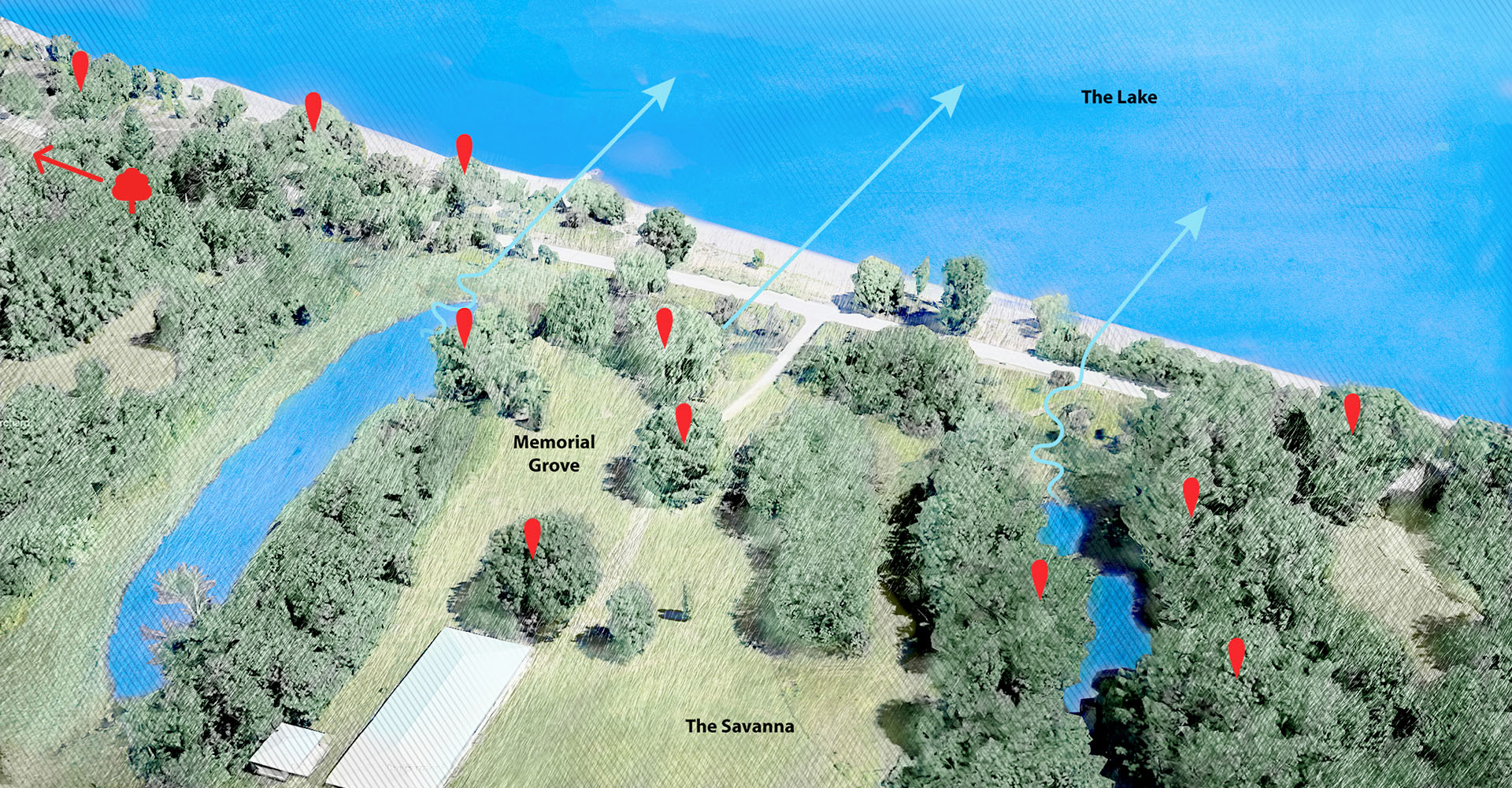
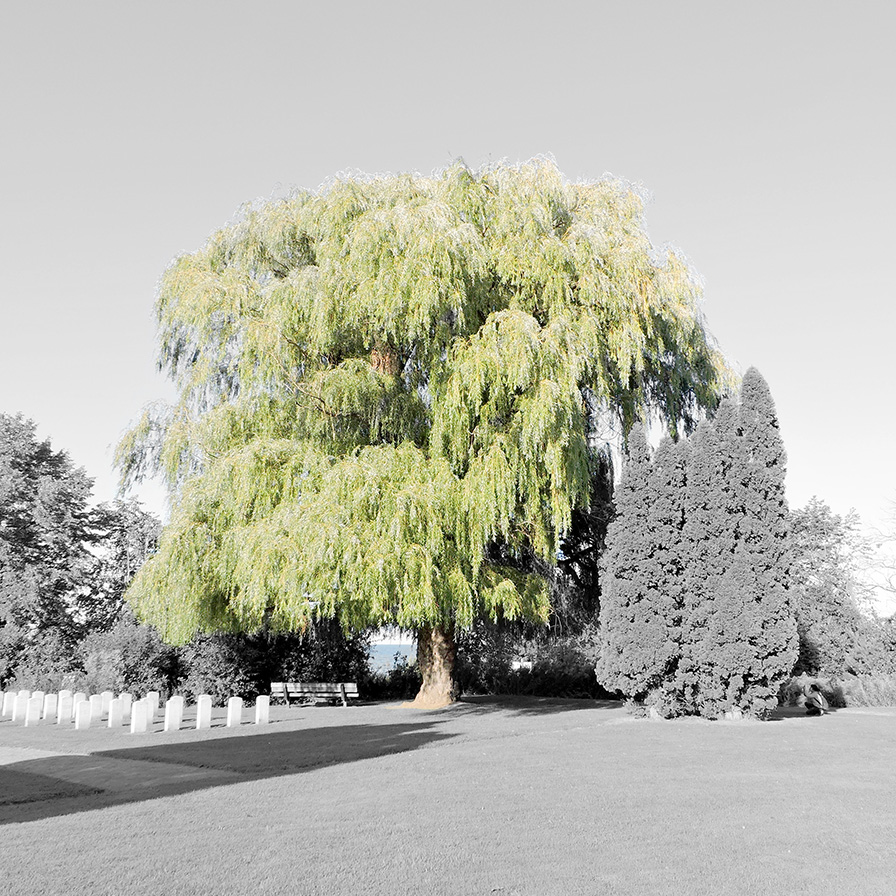
The Grove
The discovery of the Hamilton and Scourge ships was led by, Dr. Dan Nelson, a local Dentist, who is recognized on a plaque in Memorial Grove at Confederation Park. Overlooking the lake, Memorial Grove signifies loss, but the landscape is also a marker for time. Old trees inspire a feeling of reverence and awe because their presence is a reminder of human vulnerability. Like us, they exist as individuals within a larger community. However, their lifespan is far longer than ours. Although Willow trees do not live as long as Oak trees can, their presence in the landscape usually indicates that there is water under the ground. Thinking back two hundred years, one can imagine ship sails approaching like clouds over the lake. Can you find the old trees growing around Memorial Grove?
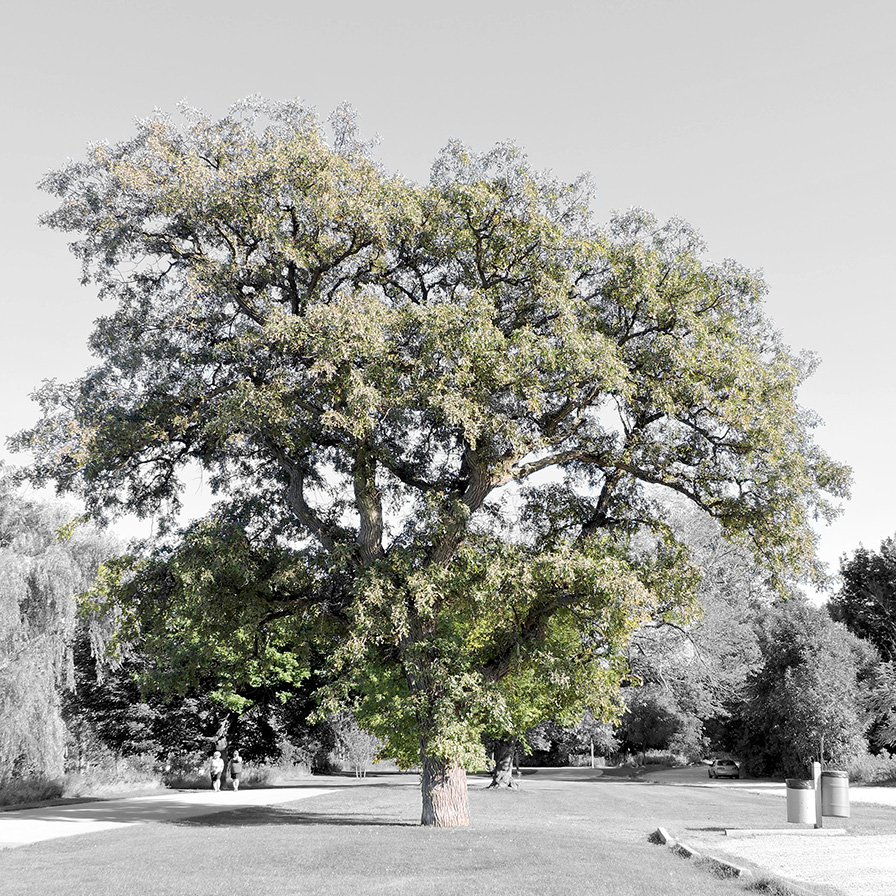
The Lake
Lake Ontario's shoreline is a dynamic space that is constantly in motion. The Captain LCdr Archie Hodge’s work logging the bearings of the ships aided in discovering the location of the Hamilton & Scourge. He is remembered for his steady force of character and presence, much like the Bur Oaks in this environment play a strong role in the stability of this landscape. An Oak tree's taproot grows deeper into the ground than it grows wide. Like guards looking out over the lake, old Oak trees are a stabilizing influence along the sandy edge of the shore. Without their presence, the fragile, permeable edge of Lake Ontario is more vulnerable to storms.
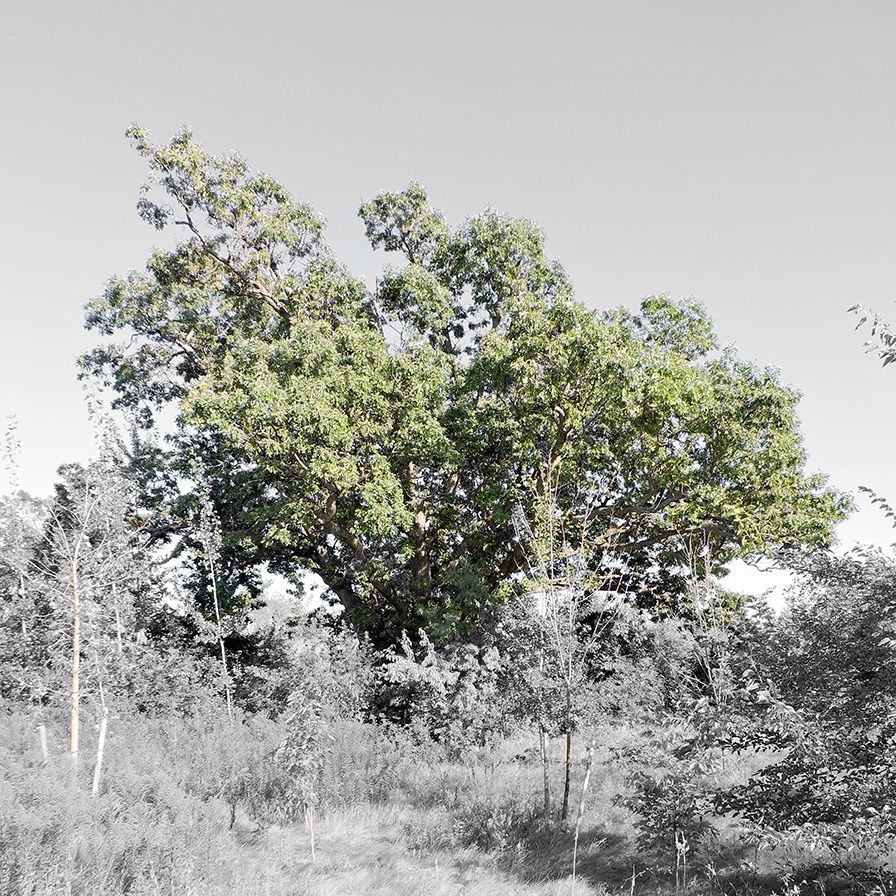
The Savanna
Trees contain historical information in the fibre of their tree rings. Like the work of the Professor, Dr. A. Douglas Tushingham, who was chief archeologist on the project that oversaw the ships’ reclamation, we can associate Monument Trees with time and history. As cities have expanded, shoreline habitats have become fragmented by human activity. Over time, many have become blocked from the Lake by the construction of highways and paths. These freshwater estuaries also have a memory. They are rich habitats that act like a giant sponge to protect Lake Ontario’s shore from erosion. Today, these landscapes can be identified through the many old-growth Bur Oaks that are dispersed around these buffer areas.
Confederation Park Tree Species
- Northern Red Oak (Quercus rubra)
- Bur Oak (Quercus macrocarpa)
- White Oak (Quercus alba)
- Black Walnut (Juglans nigra)
- Shagbark Hickory (Carya ovata)
- Willow species (Salix sp.)
A Naturalized Urban Park - What If?
Confederation Park receives water flowing from the Escarpment. Major streams, such as the Red Hill Valley and Battlefield Creek, flow into the marsh landscapes along the beach. These wetlands absorb water, clean it and slow it down before filtering water into Lake Ontario. This marsh habitat is an important part of the larger hydrological function of our city, as it relates to the hydrologic cycle of water and its interaction with the environment, atmosphere, and living things. These habitats maintain the soil, stream, wetland, and riparian properties of riverbanks. Riparian habitats are related to the storage, timing, distribution, and circulation of water in streambank ecosystems.
Landscape architects have long investigated links between people, health, and nature. Healthy urban streams are important for ensuring the heath of the wider watershed and can contribute to enhanced quality of life for people in urban areas. Tropos’ research looks at developing underutilized landscapes into naturalized urban parks and explores how these environments can support wider ecosystems. One of the studio’s primary questions is: what could this look like for Hamilton?
Explore Monument Trees In Your Classroom
Learning Link: https://www.troposltd.com/learn
Learning Resource - Seed School
Bur Oaks (Quercus macrocarpa) produce acorns that germinate into Oak trees. Bur Oak is one of the most fire-resistant oak species and is often found in oak savannas and prairie groves. They produce acorns that have a hairy, profuse fringe of hair on their cap.
If you look carefully, you can see that the old trees in this landscape are seeding new saplings under their canopies. This is a natural part of forest ecology, and produces the best conditions for new, young trees to thrive. Tread lightly, these saplings are dependent on their parent tree and still growing.
